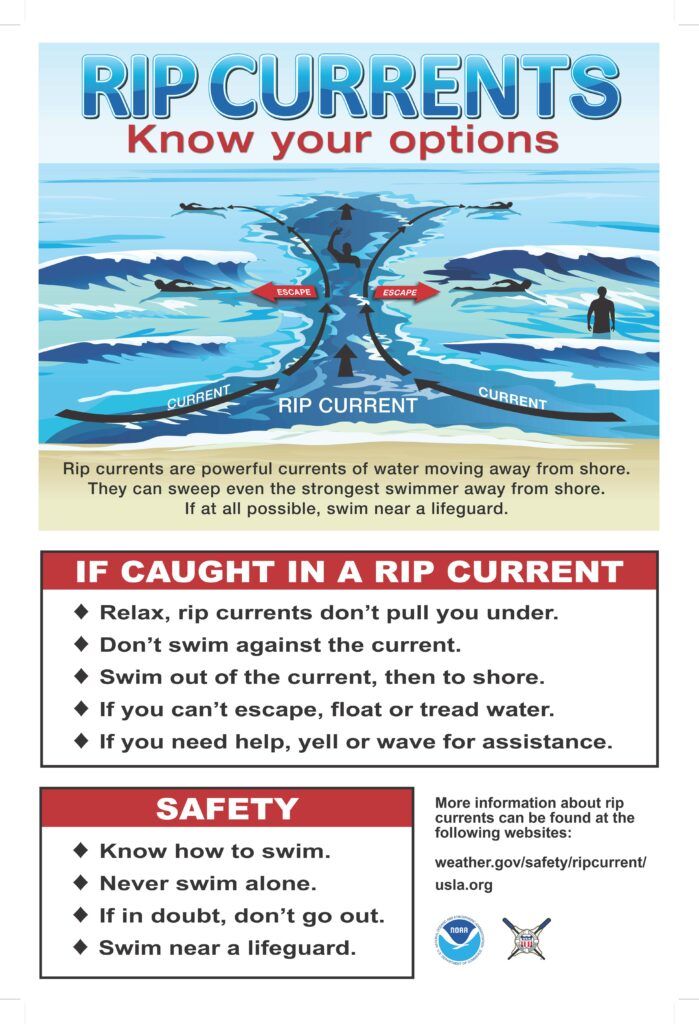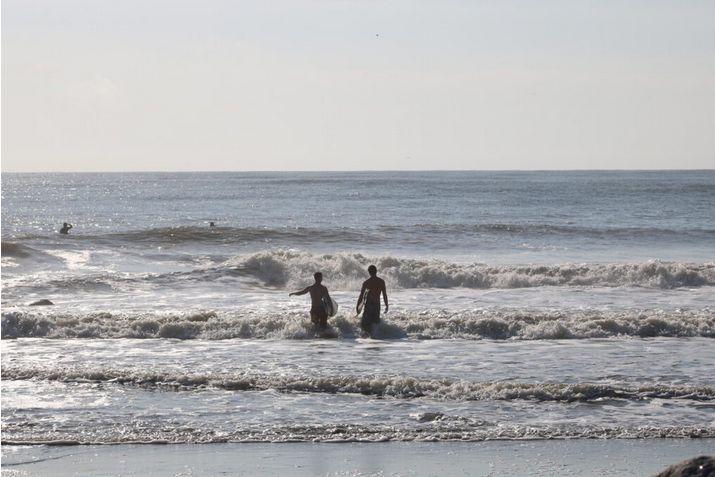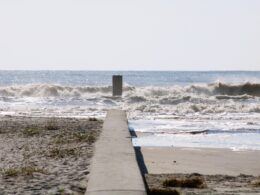We’ve all heard the cautionary tales – someone is swimming at the beach, when all of a sudden they get caught up in a dangerous rip current and are carried out to sea. In the best cases, they are rescued and brought safely back to shore.
But, in full disclosure, the stories don’t always have a happy ending. Listen, we’re not telling you this to scare you. In fact, everything we’re about to talk about is to prepare you for the eventuality that you may one day come across a rip current yourself . . . in which case we don’t want you to be scared. We want you to be ready.
So what is a rip current anyway? Well, to put it simply, a rip current is a powerful, fast-moving channel of water along the coast. In fact, these currents are so speedy (eight feet per second!) that they can outpace an Olympic swimmer.
You can imagine how difficult that would make it for the average beach goer like you or me to get out of a rip current – or get caught up in one. At this point, you’re probably wondering how to avoid that particular predicament, right?
As with many things, awareness is key. You need to know what you’re looking for to steer clear of rip currents. Perhaps the biggest red flag is a calm patch of water between two opposing sets of breakers. It may look like a nice, clear path to swim in, but it’s actually the opposite.
If you think you can avoid a rip current by staying in relatively shallow water, think again – experts say most people find themselves in rip currents when they are wading in waist deep water. They go under and come back up only to find they are far from where they originally were.
Enter, staying calm. It’s crucial not to panic if you get caught in a rip current, because it’s going to take all of the energy you have to get out of it. Save you energy and, whatever you do, don’t try swimming against the rip current to try to get back to shore. It won’t work, and you’ll just exhaust yourself.
Rather, the National Oceanic and Atmospheric Administration (NOAA) and the United States Lifesaving Association (USLA) both recommend swimming parallel to the shore if you can. If you can do that and get out of the current, then you can turn and swim straight for shore.
If swimming parallel and getting out of the current is causing you to struggle too much, you might have to go with the flow, so to speak. What does this entail? Floating or treading water until the current naturally lets you go at some point. When that happens, you’ll be free to head back to shore.
And if you happen to see someone caught in a rip current, it’s better not to try to save them. Yes, that’s the altruistic thing to do and, for most people, it’s the instinct that kicks in first. However, the very best thing you can do for that person in that moment is to call 911 or find a flotation device to toss in their direction. What you don’t want is to get pulled in the rip current too and find both of you drifting out to sea, exhausted and scared.
When in doubt, just remember to stay calm. Keeping your wits about you is one of the best defenses one can have when facing a rip current.














